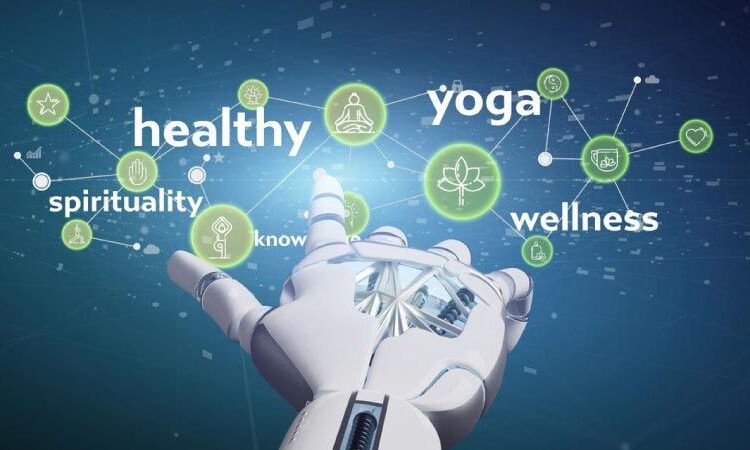
Digital tools are quietly reshaping how people approach their health. Instead of waiting weeks for a short appointment or searching endlessly through articles, many are turning to AI-powered health assistants—chat-based tools that can answer questions, help interpret basic information, and guide everyday decisions about lifestyle and self-care.
Used wisely, these “health bots” can support better habits, smarter conversations with professionals, and more organized health information. Used carelessly, they can also create confusion or false confidence. The key is understanding where they shine, where they have limits, and how to fit them into a safe, effective wellness routine.
What AI Health Assistants Can Actually Do Well
AI health assistants are not replacements for doctors, but they can be powerful tools for:
- General education
- Explaining common terms like “HDL cholesterol,” “sleep hygiene,” or “insulin resistance” in plain language so people can better understand their medical reports and recommendations.
- Lifestyle guidance
- Offering ideas for balanced meals, movement routines, stress reduction techniques, and sleep habits tailored to different ages, schedules, and preferences.
- Question preparation
- Helping people turn vague concerns into clear questions they can bring to their doctor, therapist, or nutritionist, making appointments more productive.
- Reminder and tracking support
- Suggesting systems for tracking symptoms, medications, exercise, or mood, so patterns become more visible over time.
The real value here is not diagnosis, but clarity—turning complex health information into something understandable and actionable.
The Limits: What AI Should Not Replace
For all their strengths, AI health assistants have important limits:
- They can’t perform physical exams or see signs a human clinician would notice.
- They don’t have access to your full medical record unless you share information, and even then they may not interpret it like a trained specialist.
- They can’t make urgent decisions in emergencies—chest pain, difficulty breathing, severe allergic reactions, or sudden neurological symptoms require immediate medical care.
- They may occasionally give outdated or incomplete suggestions if the underlying information is not current.
A good rule of thumb: AI can help you understand and organize, but it shouldn’t be your sole source of diagnosis or treatment decisions, especially for serious or rapidly changing conditions.
Using Health Bots Safely and Effectively
To get the most out of AI health tools while staying safe, it helps to follow a few guidelines:
- Be honest but selective with information
- Share enough detail to get useful guidance—symptoms, habits, general history—but avoid posting sensitive identifiers (like full names, IDs, or financial details) unless you fully trust the platform’s privacy protections.
- Cross-check important advice
- For any suggestion that could significantly affect your health—changing medication, starting a strict diet, or stopping a treatment—double-check with a qualified health professional.
- Use AI to prepare, not to replace
- Let the assistant help you clarify your questions, summarize your symptom timeline, or organize notes before you see your doctor. This can improve communication without trying to substitute for professional judgment.
- Stay aware of nuance
- AI may describe typical patterns, but your body is unique. If something feels deeply wrong or unusual, seek in-person or telehealth medical care even if an assistant seems reassuring.
Turning Health Conversations into Organized Information
One of the hidden strengths of digital health tools is how much they can help you capture and organize your health story. Over time you might collect:
- PDFs of lab results and imaging reports
- Written care plans from doctors and therapists
- Exercise or rehab protocols from physiotherapists
- Nutrition guides or meal templates
- Symptom logs, sleep tracking summaries, or mood charts
If these files are scattered across email threads and download folders, it becomes hard to see how everything fits together. AI assistants can help you outline and interpret the content, but you still need a practical system to keep the documents themselves under control.
Some people create a “digital health binder,” grouping relevant files for each condition or time period. For example, you might gather all documents related to a recent diagnosis—test results, explanation PDFs, and lifestyle recommendations—and use a tool that can merge PDF files into one clear packet you review before appointments. Later, if a new specialist only needs your rehab protocol or medication summary, you can split PDF pages and send just the relevant section instead of your entire record.
A simple, focused document workflow like this—supported by a service such as pdfmigo.com—turns scattered information into something you can actually use.
How AI Health Assistants Support Long-Term Habits
Beyond answering questions, health bots can help reinforce long-term wellness behaviors:
- Habit planning
- They can suggest realistic starting points—like two short walks per day instead of a demanding exercise program—and help you build gradually.
- Reflection prompts
- By asking how you slept, what you ate, or how your mood felt over the week, an assistant can encourage gentle self-review rather than harsh self-criticism.
- Education “drips”
- Bit by bit, they can teach you about topics like blood pressure, blood sugar, joint health, digestion, or mental health tools, making complex ideas easier to absorb.
- Motivation through understanding
- When you know why a habit matters—how strength training protects bones, or how sleep affects hormones—you’re more likely to keep doing it.
In this sense, a good AI health assistant becomes less of a “magic solution” and more of a steady companion, helping you stay curious, informed, and engaged with your own well-being.
The Future: Blending Human Care with Smart Tools
The future of health isn’t purely human or purely digital; it’s a blend:
- Human clinicians for diagnosis, relationship-based care, and complex decision-making
- AI tools for education, organization, and everyday support
- Secure document workflows that keep your information accurate and easy to share
When all three work together, people can arrive at appointments better prepared, understand their options more clearly, and follow through on plans with less confusion.
AI health assistants are not meant to replace your doctor, therapist, or coach—but they can help you make better use of those relationships. With clear boundaries, organized information, and a focus on long-term habits over quick fixes, technology can become a genuinely helpful ally in your journey toward better health.




